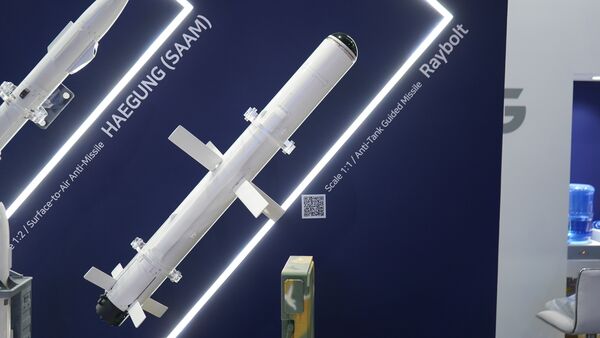
The Raybolt, displayed at the DSA 2024 exhibition, is a manportable anti-tank system designed to be carried and operated by one user. It fires guided projectiles that can be used in either top-attack or direct-attack flightpath modes. (Janes/Kapil Kajal)
South Korea is planning to initiate a “performance improvement plan” for its Raybolt anti-tank guided missile (ATGM), a LIG Nex1 spokesperson told Janes at the Defence Services Asia (DSA) 2024 exhibition held in Kuala Lumpur from 6 to 9 May.
The Raybolt ATGM is developed by South Korea's Agency for Defense Development (ADD) in collaboration with LIG Nex1 and Hanwha Aerospace.
With the “performance improvement plan”, the ADD seeks to increase the range of the ATGM to 5 km, the spokesperson said.
“The ADD is discussing the plan with the Republic of Korea Army (RoKA) and [the] marines [to finalise the upgrades on the Raybolt],” the spokesperson added.
The current in-service Raybolt ATGM can strike the targets at a maximum range of 2.5 km, according to the spokesperson.
According to Janes Weapons: Infantry, the Raybolt is a manportable, lock-on-before-launch, fire-and-forget, ATGW system. It can either follow a top-attack or direct-attack flightpath.
The Raybolt missile possesses a tandem high-explosive anti-tank (HEAT) warhead and can penetrate 900 mm of rolled homogeneous armour (RHA) equivalent, behind explosive reactive armour (ERA).
In addition, the spokesperson said South Korea has offered its air-defence systems such as the long-range surface-to-air missile (L-SAM) and the Cheongung II medium-range surface-to-air missile (M-SAM) to the Malaysian Army.
The L-SAM is a medium-to-long-range SAM system that can intercept incoming ballistic missiles at a maximum firing range of 150 km and altitudes ranging between 40 km and 100 km.
Looking to read the full article?
Gain unlimited access to Janes news and more...







